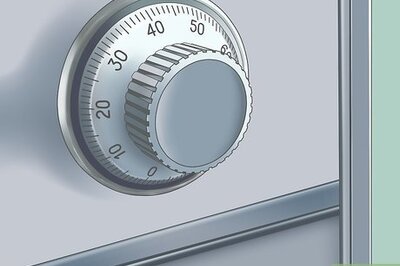
views
New Delhi: The Indian Council of Medical Research (ICMR) has warned that community transmission of Covid-19 cases may take anywhere from 20 days to a few months to be visible, and every infected Indian will pass on the virus to 1.5 persons in the best-case scenario and four persons in the worst-case scenario.
The study, published in the Indian Journal of Medical Research, was based on mathematical modelling and it predicted that controlling the spread of coronavirus would be difficult in “pessimist” scenarios in cities such as Delhi, Mumbai, Kolkata, Bengaluru, Chennai, Hyderabad and Kochi, if people who have had travel history to infected countries or contact with the infected don’t isolate themselves.
Even in an optimistic scenario with intervention from the government, Delhi could see two lakh Covid-19 symptomatic cases over 600 days. “Only 5 per cent of these will require ICU admission, which is 10,000 cases over two years in Delhi,” Tarun Bhatnagar, a co-author of the study and a member of the National Task Force for tackling Covid-19, said.
If the pessimistic scenario is considered, even with intervention, Delhi may witness as many as 90-lakh symptomatic cases, of which 4.5 lakh may require ICU admission in 45 days. Other metropolitan cities Mumbai, Bengaluru, and Kolkata will also show similar trends in terms of numbers varying slightly based on population, Bhatnagar said.
To put the infectiousness of the disease into context, if a single person passes the disease to four people as mentioned in the worst-case scenario above, it could lead to nearly 10.5 lakh total infections in just 10 interactions or 10 layers.
This means that if one person infects four people, by the time that cycle happens 10 times, over 10 lakh people are infected. This figure comes from calculating four to the power of 10.
On the other hand, if the best-case scenario of 1.5 infections is considered, the total infections in 10 interactions will be 57. This is why social distancing and self-isolating is so important.
The mathematical model-based study, however, only took into account data till late February – before India saw its second wave of the outbreak that has now sickened over 550 people.
Dr Raman R Gangakhedkar, epidemiology head of ICMR, and one of the authors of the paper, said the main purpose of the paper was not to look at how many cases would occur but what methods would work. He said that the conclusion was that social distancing will be instrumental in flattening the curve, which could help the healthcare system deal with the influx of patients.
The report said placing 50% of the symptomatic cases under within three days quarantine would reduce the total number of cases by 62% and the peak by 89%.
But if the numbers predicted in the paper do come to pass, it could lead to a crisis of an unprecedented scale. According to government data accessed by The Hindu, India only has 37,618 isolation beds, 9,512 ICU beds and 8,432 ventilators as on March 24. As on date, the central and state governments collectively do not have more than 60,000 quarantine beds.
These numbers would have to be increased dramatically in the next few days, and Prime Minister Narendra Modi had on Tuesday in his televised address to the nation announced a Rs 15,000 crore healthcare financial package.




















Comments
0 comment